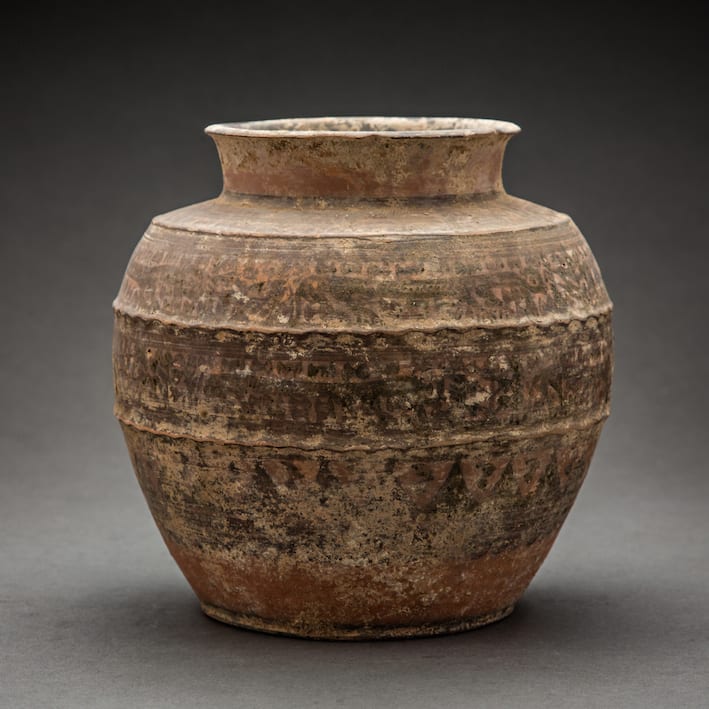Indus Valley Civilization Terracotta Vessel, 2500 BCE - 2000 BCE
Terracotta
height 17.8 cm
height 7 in
height 7 in
LO.512
Around 2600 BCE, most sites in northern and central Baluchistan were abandoned, as a consequence of the expansion of the Indus Civilisation into their territory. Nevertheless, southern Baluchistan continued to...
Around 2600 BCE, most sites in northern and central Baluchistan were abandoned, as a consequence of the expansion of the Indus Civilisation into their territory. Nevertheless, southern Baluchistan continued to be inhabited by a people labelled "Kulli."This cultural complex is named after a site in Kolwa, discovered by Aurel Stein. Since then, several other sites became known from Makran to southern Kalat and Nindowari, to Nausharo in the Kachi plain, and to the eastern foot of the Kirthar Range in southwestern Sindh. Some motifs and vessel shapes found in southeastern Iran and on the Arabian Peninsula, are sometimes also linked to the Kulli and seen as indications for long-distance contacts. The lay-out of some sites resemble the plan of Harappan sites: rows of houses are built along lanes and streets, which are sometimes paved. Sometimes, stairs provide access to upper terraces. Building materials were large ashlars or boulders, and the houses are often preserved to a considerable height. Many of these sites are located in strategic positions, on top of mountains or terrace hills, overlooking the valleys and controlling the plains and passes. Other sites are small hamlets built in the open plain. Although they have no defenses, they are of a very compact appearance. Most sites are associated with dams.
Ceramic vessels from the Kulli phase have been unearthed at Nindowari, Nausharo and other small sites in Baluchistan. Their surface often painted with reddish-brown slip designs, one of the most common being the ensemble of vertical strokes depicted on the neck, as in the case of a small fragment unearthed at Bakkar Buthi, a small Harappan site located in the Kanrach Valley, a remote area bordered by the Mor and Pab Ranges. All the motifs fetaured on this jar would seem to indicate its appurtenance to the Kulli culture of southern Baluchistan, possibly dated to the late 3rd Millennium BCE.
Comparable works are to be found in: G. Possehl, Kulli: An Exploration of an Ancient Civilization in South Asia, Durham, 1986.
Ceramic vessels from the Kulli phase have been unearthed at Nindowari, Nausharo and other small sites in Baluchistan. Their surface often painted with reddish-brown slip designs, one of the most common being the ensemble of vertical strokes depicted on the neck, as in the case of a small fragment unearthed at Bakkar Buthi, a small Harappan site located in the Kanrach Valley, a remote area bordered by the Mor and Pab Ranges. All the motifs fetaured on this jar would seem to indicate its appurtenance to the Kulli culture of southern Baluchistan, possibly dated to the late 3rd Millennium BCE.
Comparable works are to be found in: G. Possehl, Kulli: An Exploration of an Ancient Civilization in South Asia, Durham, 1986.



